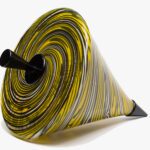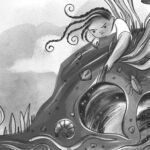Isolation inspiration
May 1, 2020
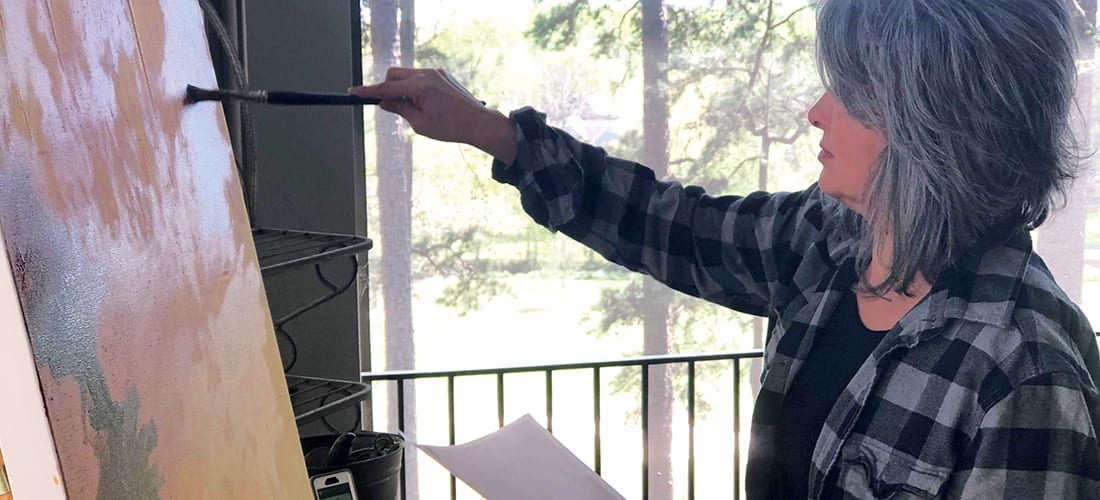
How have Charlotte artists, actors and dancers adjusted to sheltering in place? Very well, thank you.
by Page Leggett
Artist Mary Kamerer didn’t know how long we’d be under a shelter-in-place order. None of us did. So, she brought a few supplies from Dilworth Artisan Station home with her. But not nearly enough.
Kamerer is married to a physician who’s working during the coronavirus crisis. Her priority is keeping their family safe, so she’s fastidious about what comes into the house. Retrieving art supplies from her studio wasn’t an option.
“Anything can be a canvas,” she says. She planned to use scrap plywood she saved from a home renovation as a makeshift canvas when she ran out of actual canvases.
Creatives are accustomed to solving problems on the fly. Ask any actor who’s flubbed a line. The show doesn’t stop. You ad lib and move on.
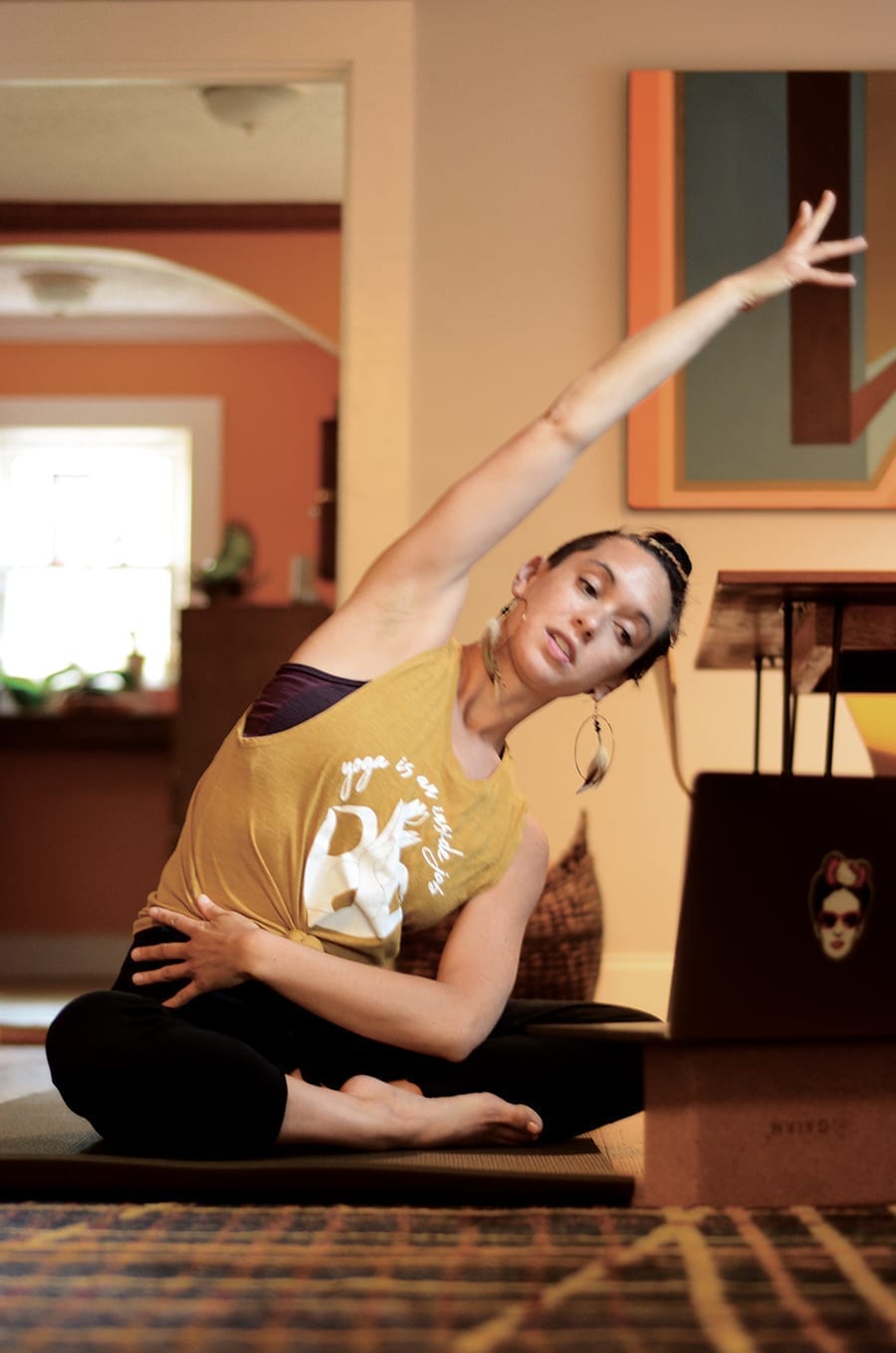
Leaning on other skills
Audrey Baran was in the middle of rehearsals for Big Moves 2020, her dance company’s final concert of the season, when the stay-home order was announced. At press time, she wasn’t sure if the show would go on — but she wasn’t wringing her hands.
The dance teacher and founder of Baran Dance, a contemporary dance company, remained diligent about her routine, even though there’s nothing routine about home confinement.
“I wake up at the same time and practice yoga every morning, no matter what. On the creative side, finding a few minutes of improvisation in my kitchen, living room or yard helps to make me feel like myself,” Baran says.
“I’m an incredibly structured person,” she adds. “So, managing the time is relatively easy. I’ve found that balancing routine with enjoying the emptiness is an art in itself.” She wondered if others might like to join in her yoga practice — from a distance. She asked friends if they’d like to be part of virtual yoga and then opened it to the public via social media.
Creatives are introspective by nature, and sheltering in place has allowed them even more solitude to ponder.
“I’ve been thinking about my identity a lot,” Baran says. “If I got injured or couldn’t dance for some reason, what would I do? Who would I be? I’ve found that leaning on other skills is helpful, albeit not nearly as fulfilling. I love cooking and am catching up on a lot of reading. I’m always in motion … so this time has really made me slow down. My dogs and husband appreciate it.”
Her company made dance videos for Instagram and offered weekly classes on Instagram Live. “Dancing alone can be therapeutic but also lonely,” Baran says. “It’s nice to know your friends are dancing with you.”
She’s made the most of the downtime. A novice drummer for years, she’s used the time at home to practice more. She’s taken knitting classes via Zoom — and already has a scarf to her credit.
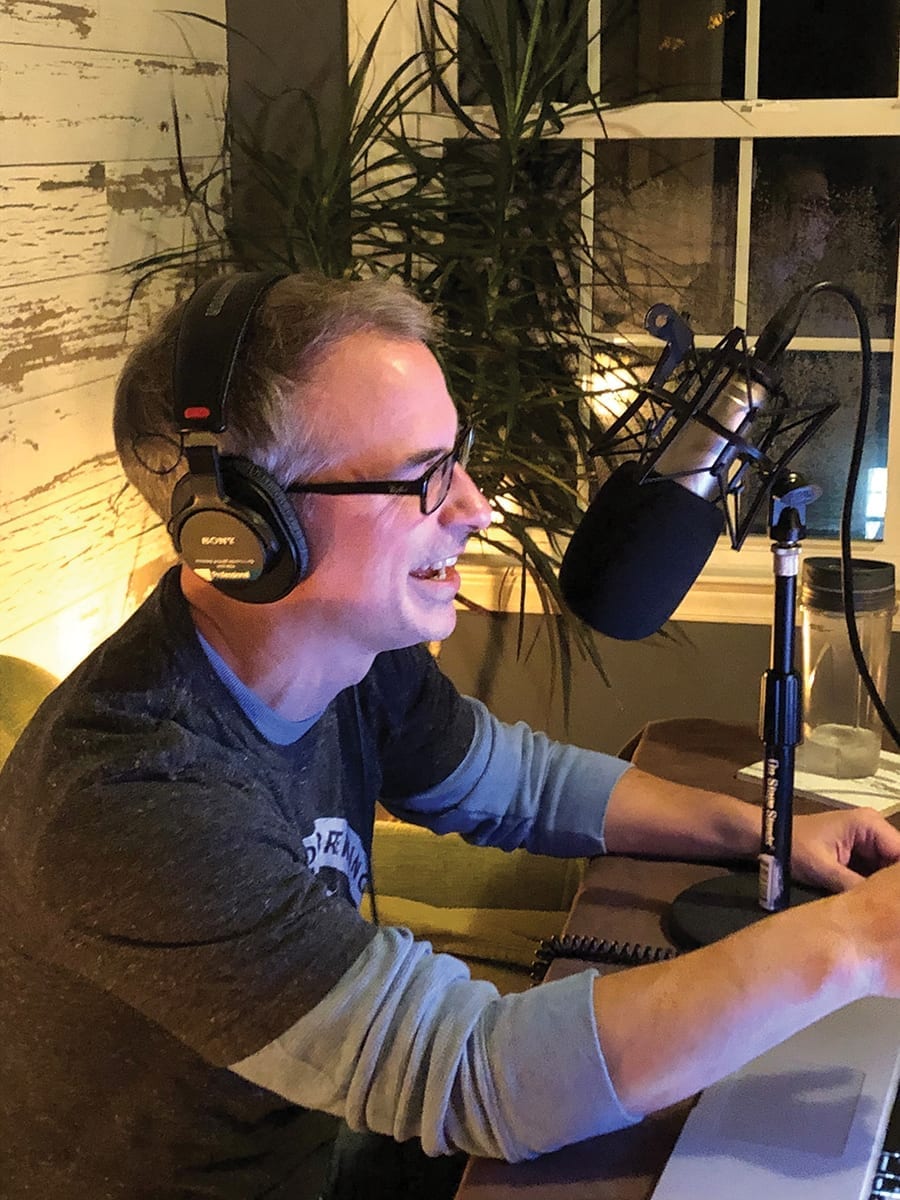
‘I can learn something new’
Baran wasn’t the only creative to take up a new art form. Actor and producer Brian Lafontaine spent a lot of his early quarantine days at the piano. “I’ve been at it on and off for a few years, but more so now because — well, I’ve got the time. The entire film and TV industry is shut down until further notice,” he says.
You might have seen Lafontaine in local productions (most recently, as Oscar Madison in Theatre Charlotte’s The Odd Couple) or on TV. He’s done everything from commercials to Dawson’s Creek (1998) to the Netflix series Stranger Things (2016) to the current season of Ozark.
“I do this for my own mental well-being,” he said. “It’s really the perfect time to reconnect with music. It’s also good to know that — at almost 50! — I can learn something new.”
Lafontaine also has a podcast called You May Have Seen, in which he interviews not-so-famous professional film and TV actors. Since the coronavirus outbreak, he’s been revisiting former guests to talk about how the current situation is affecting them. Since Lafontaine is also a voice actor, he’s still getting auditions and jobs. But he says an actor’s life is one filled with uncertainty even in good times. So, actors are as prepared as anyone could be for the doubt created by a pandemic.
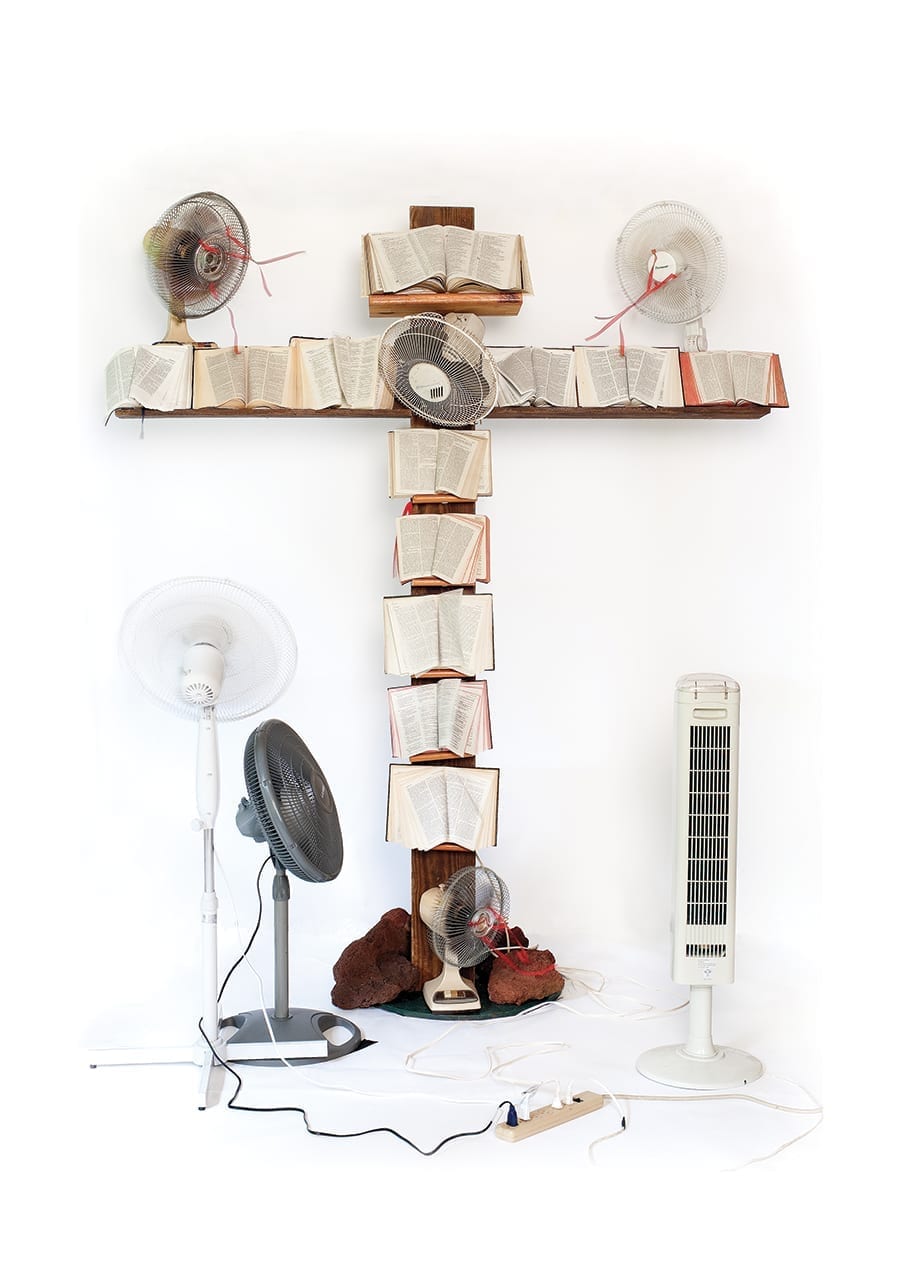
A creating cocoon
Martin Settle, a writer, poet, artist and retired English professor, maintained his regular routine during the early days of the lockdown. He missed his 5:30 a.m. gatherings at Starbucks with other early risers, but little else changed. “I continue to work as I always have as a writer and assemblage artist. I write in my den, and I do art in my studio in the backyard. I couldn’t cope with life — with or without the coronavirus — if I wasn’t creating.”
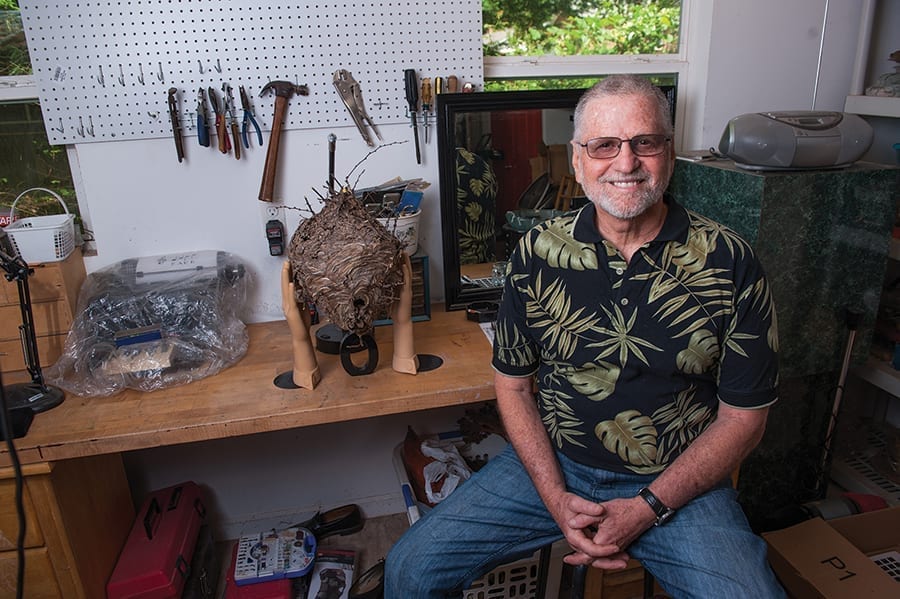
The pandemic inspired Settle to create a 10-minute wordless comedic play. “Two people wearing masks and looking down at their phones bump into each other,” he says. “They’re horrified that they accidentally touched.” They also drop their phones and fear picking them up; confusion and humor ensue.
In good times and bad, Settle is in his home studio from 7 to 11 a.m. each day. “I’m extremely lucky,” he says. “I have this cocoon I’ve always had where I get to create.”
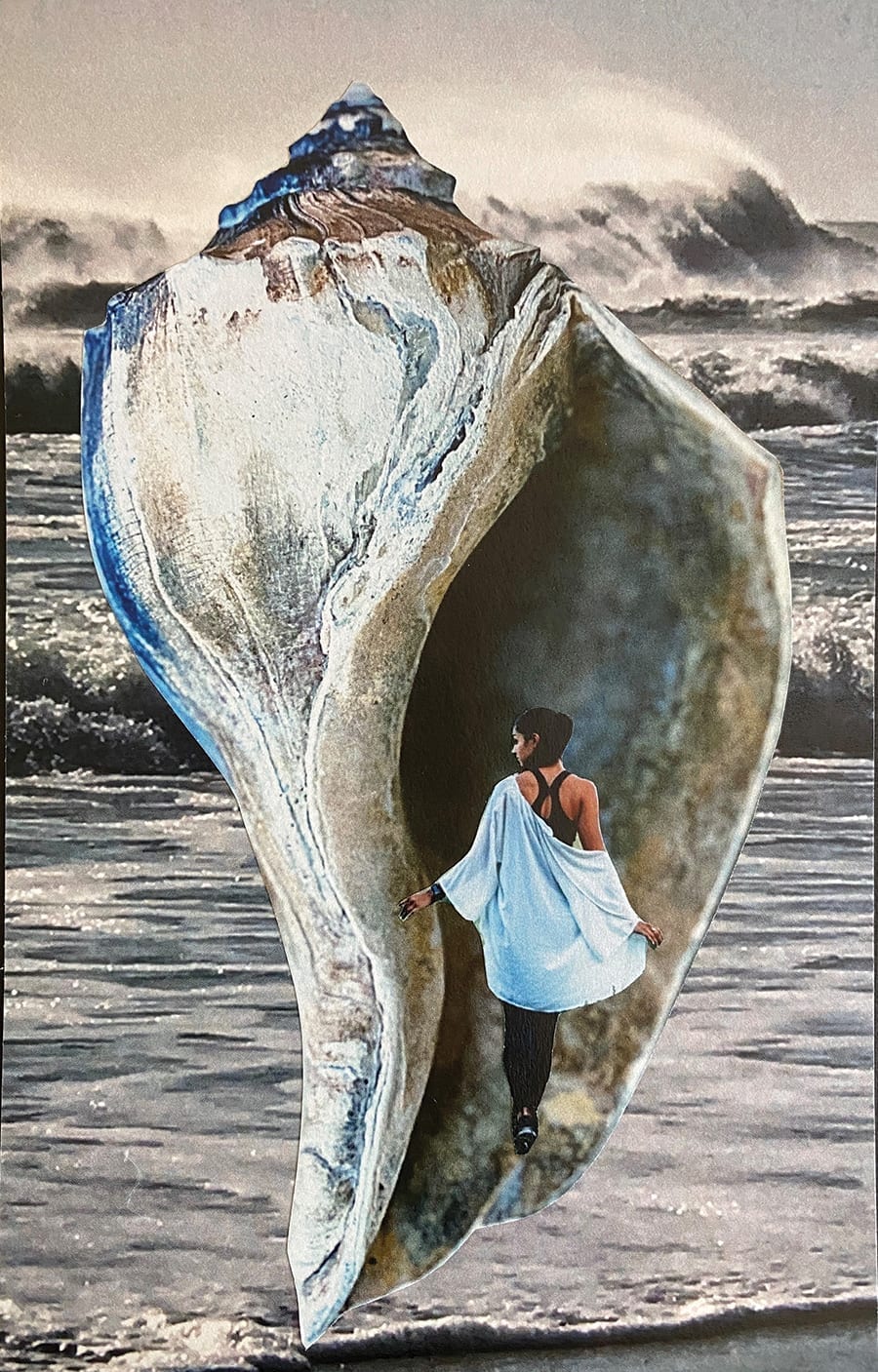
‘Trust the path’
Photographer, artist and teacher Catherine Anderson has a place to exercise creativity in her home, too — a garage-turned-studio. Normally, Anderson has a packed teaching and travel schedule, including leading creative classes all over the world. The pandemic, she says, forced her into “pause mode.”
But she didn’t stop creating entirely. “Art is about making meaning,” she says — and we’re all searching for that now.
“I could keep busy in my studio for the next 10 years,” says the former lawyer and South Africa native in her lilting accent. “I have enough supplies and ideas. But I’m asking myself: What feels important now? And what feels important is stopping and sitting in the stillness for a while.”
Anderson admits she is privileged to enjoy the comfort of her home studio while others are suffering. “How do I live with that paradox? I feel like the best use of this time is patience.”
She started a new journal. “I wrote on the first page: ‘Embracing the Unknown.’ That’s what I’ve been teaching these last couple of years — life is uncertain, so we have to live in the moment.”
Anderson has a labyrinth in her backyard, just beyond the studio. She’s walked it during the shutdown, reminding herself, “There is no place we need to go. We must move within. Trust the path.”
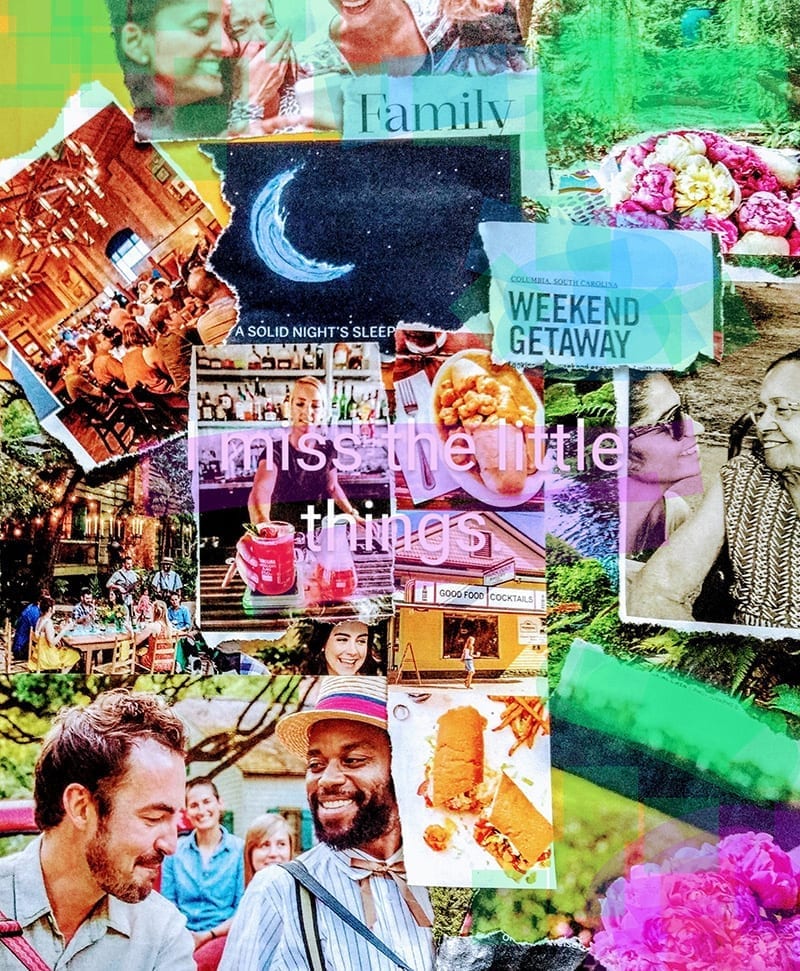
Compulsive creativity
Even people who aren’t artistic, at least not in the visual sense, have used the time alone to create. I’m one of them. Taking to heart the Maxine Hong Kingston quote, “In a time of destruction, create something,” I started making daily “coronacollages” at the start of sequestration.
Tearing pages out of magazines and then collaging the pictures has been a peaceful escape. From that very first day, I knew these works should be temporary. “[This collage] existed just long enough for me to snap a photo,” I shared on social media. Making it impermanent reminds me that nothing — including this plague — lasts forever.
Collage time was what I most looked forward to each day, and many days I found I couldn’t limit myself to just one. I collaged compulsively.
As uncertain and frightening as this time has been, many artists have felt lucky to have art as an outlet.
“I am grateful to have painting to keep me preoccupied,” Kamerer says. “In times of crisis, people fall back on the arts. We’re looking to books and movies. People are contacting artists to ask, ‘How can I keep the kids occupied?’”
She’s missed her colleagues at the studio but continues to paint in her kitchen and on her back porch. She has shared her process with other artists — and the would-be artists the pandemic has spawned — on YouTube. “No one wants to literally see paint dry,” she says. “So, I’ve been recording my work and turning it into a time-lapse video tutorial. I’ll condense eight hours into two minutes.”
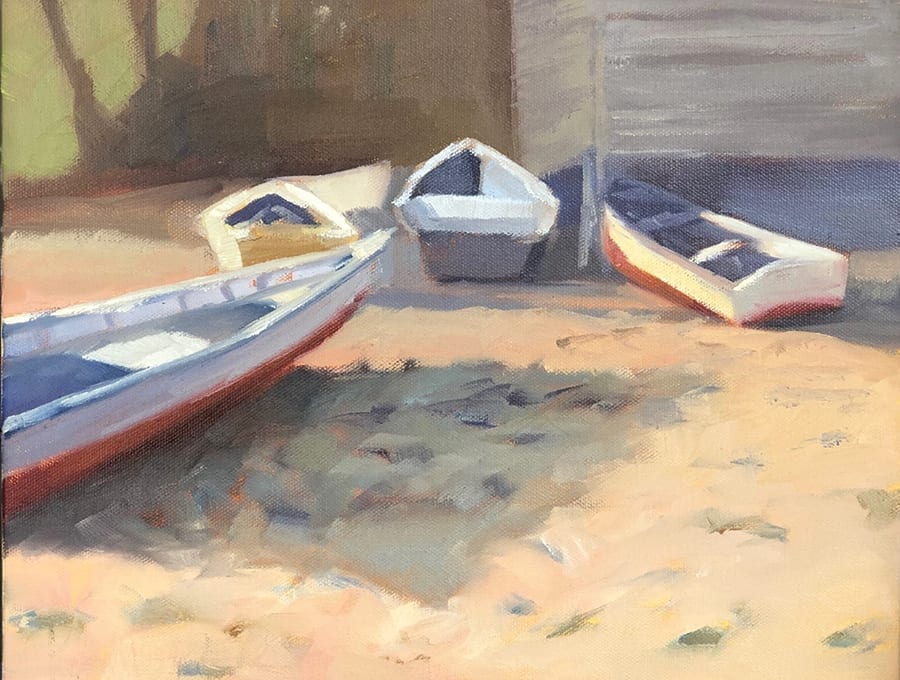
The still-life and landscape painter sought inspiration close to home. In normal times, she enjoys painting en plein air. But people often approach and peek over her shoulder, and that’s too much of a risk now. So, she began snapping photos when she and her husband biked the McMullen Park Greenway, painting from those once she returned home.
She never considered whether her “pandemic paintings” would sell. She paints because that’s what artists do. And she wondered how she could help. If the paintings she created in quarantine do sell, she plans to donate the money to the COVID-19 Response Fund.
Art, whether you’re making it or appreciating it, is healing. Eventually, Catherine Anderson says, we’ll come to see some purpose in this troubled time. “We’re living in a liminal space,” she says. “But there is meaning in this. A new world is being born.” SP

